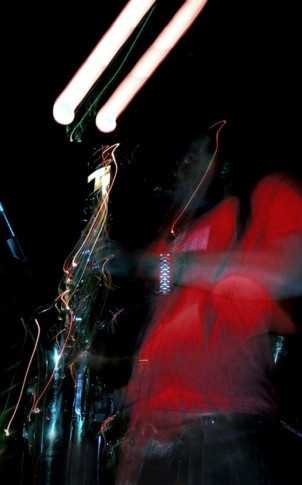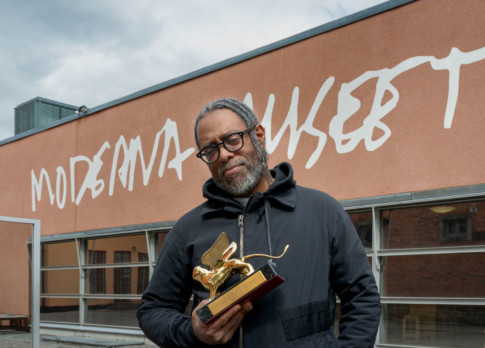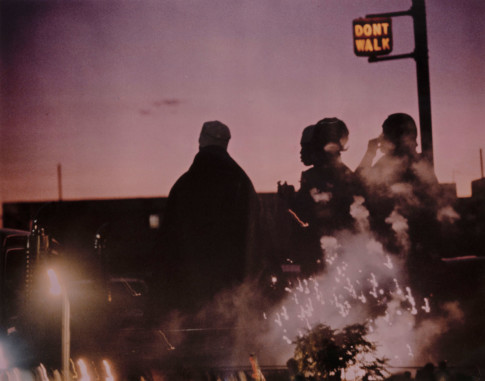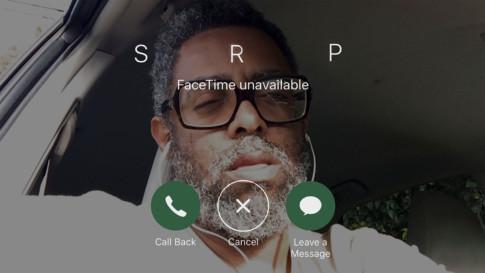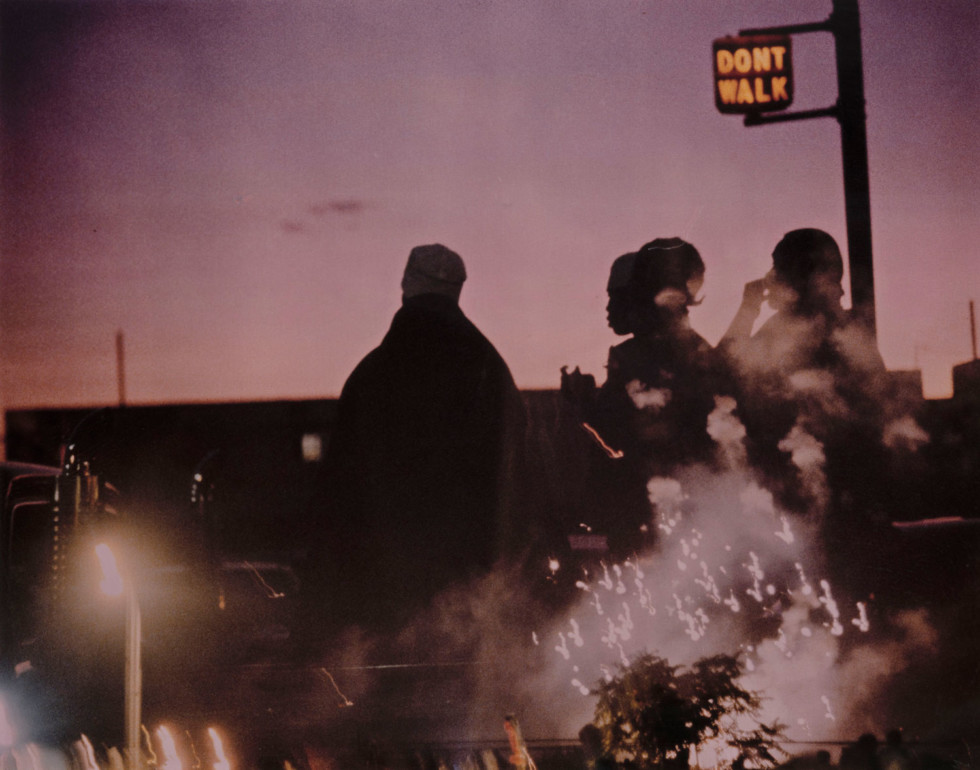
Ming Smith, Untitled, New York, NY, ca 1981 © Ming Smith
Some very preliminary thoughts on the work of Frida Orupabo, Missylanyus, Ming Smith
Text: Arthur Jafa
Truth be told, these works speak volumes for themselves. “go see” is as much as I really wanna say (which is to say go sit with the work). Of course this begs the question, where can the work be seen?
In the case of Frida Orupabo and Missylanyus, online would be the answer. Where the future has been crouching in plain sight for approaching a decade now. With Ming, one imagines that one could visit a gallery/museum space of some sort. Each has made works of Black genius (which is to say more than just genius) and as such works that have sat where there’s been space to sit, or lay, or incubate, typically in or in proximity to some figurative trash heaps, or other marginally de-territorialised zones.
Ming, Frida, and Missylanyus each chosen as coefficients (as co-conspirators of A Series of Utterly Improbable, Yet Extraordinary Renditions) precisely because they embody the very things to which I aspire, beauty, complexity, the formal embodiment of blackness… not a simple thing given that blackness (the expression of blackness), presupposes a certain formlessness, or perhaps just a restless relationship to form, a bit of my oft voiced yet still vague notion, abnormativity (the superbad), the presence of nuance and directness in combination with a decentring of the subject (by which I mean an evasion of the self and/in combinations with a certain abstract relation to the proposed, and/or presumed outside of self, subject at hand (or content), of their particular articulations). I am led (driven even) by each of their examples. So a few, very preliminary thoughts about their work.
I came to each of these artists outside of a curated introduction. Missylanyus and Frida, I discovered (if there’s such a thing) on the Internet, Missylanyus on YouTube, Frida on Instagram.
Seeing in Tongues
Ming’s work I actually first saw in the 1973 Black Photographers Annual and was greatly impressed. She told me years later that the images there were essentially her first serious efforts (she being the sole female member of the Kamoinge Workshop). But, I didn’t really “see” the work ’til years later, in the form of a steady stream of covers for her ex, Jazz musician David Murray (meaning the dust jackets of his 12” vinyl recordings). These covers (images) radically inflected the developing picture maker that I was.
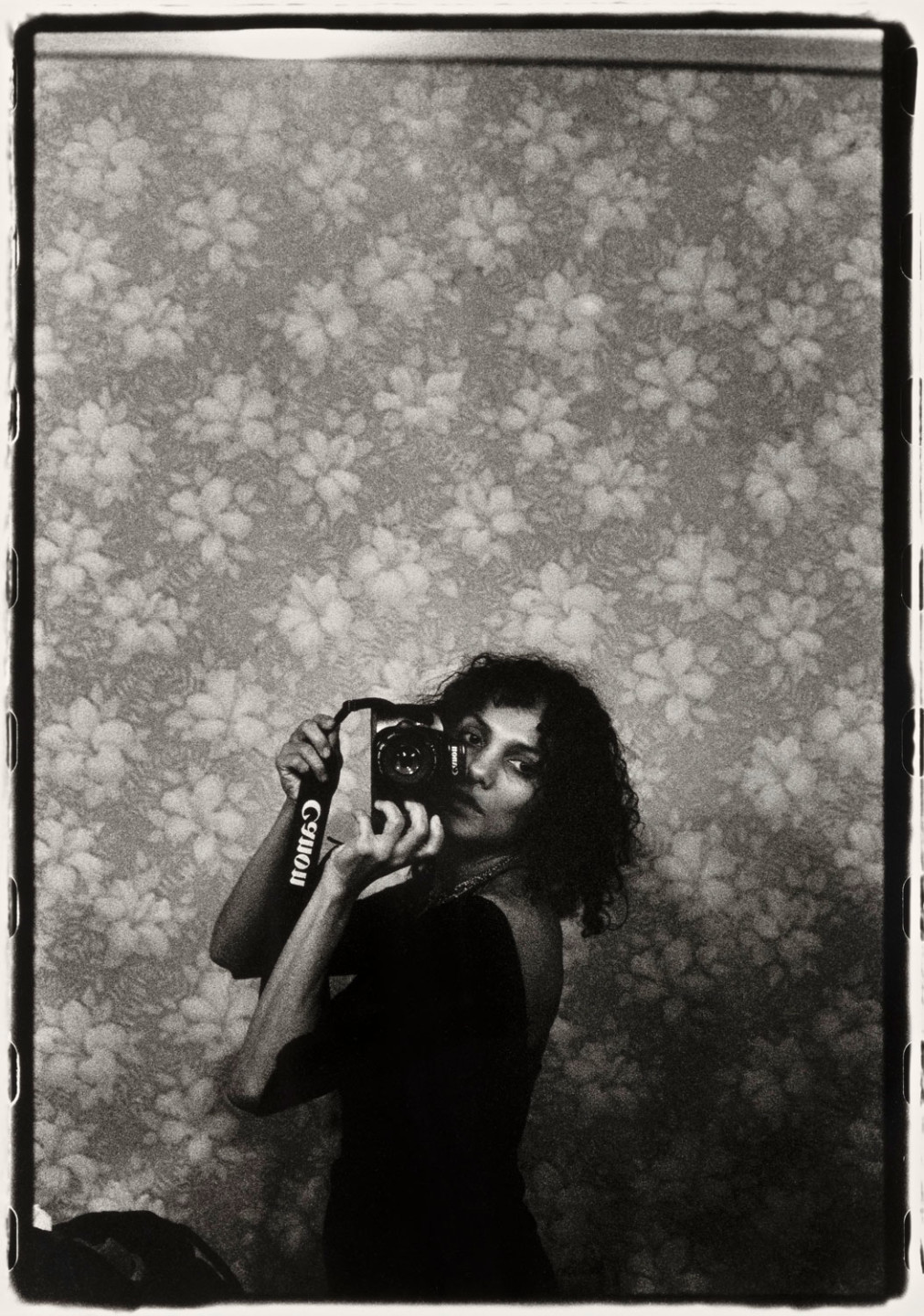
At the time, I didn’t connect these images to the pictures I’d seen earlier. These new works were masterful, misaligned, and catalytic displays of force, beauty, and formal complexity (“power, beauty, and alienation”) well beyond anything I’d ever seen in a “mere” picture. And here, I experienced something we’ve since termed UFOria (the jouissance produced by exposure to an alien, and thus unfamiliar, iteration of an expressive modality that though transposed, is still deeply tethered to fundamentally Black and hence surprisingly familiar modalities of expression). Even now (and this I think still is somewhat unfathomable to Ming) she’s my master (if there’s such a thing, masters/slaves, slave/master).
One thing evident in Ming’s work (in conjunction with a total commitment to rendering black life) is her unmatched mastery of slow shutter speed photography. In African Art in Motion (1974), Robert Farris Thompson explicates how African artefacts functioned in their natal contexts versus how they functioned in the Western art spaces they came to occupy.
He points out that in the West, African artefacts were placed on pedestals that presupposed them as objects, artefacts without agency or mobility. The viewer, on the other hand, as subject, being both mobile and self-determined, would move around the displayed (and “captive”) artefact, taking it in from various vantages.
The structure of this interaction is totally bound up with an array of Eurocentric ideas such as subject/ground, vanishing point perspective, centre versus margin, slave/master dynamics, et cetera. Thompson points out that, in their natal contexts, African artefacts were as likely to move around the “viewer” as vice versa. Hence, we are confronted with a radically different conception of subject/object relations. The implication, in regard to photography, is one in which the photographer (our subject) is confronted with an object that is not “stilled” but in fact dynamic (not mastered but free). And this counter agency, the simultaneous mobility of both the subject and the object will as a consequence, in photography, produce the misalignment we term a blur.
Ming is the absolute master of the blur. She has a singular ability to capture images that display both precision and indeterminacy in the service of aforementioned commitment to rendering Black Life. Her deployment of this technique presupposes that the lack – if not outright avoidance – of simple indexicality is as fundamental a reformulation of the photographic imperative as we’ve seen. This reformulation is achieved by a perfect realignment of the apparatus with the cardinal Black aesthetic values of stealth, silence, and fugitivity.
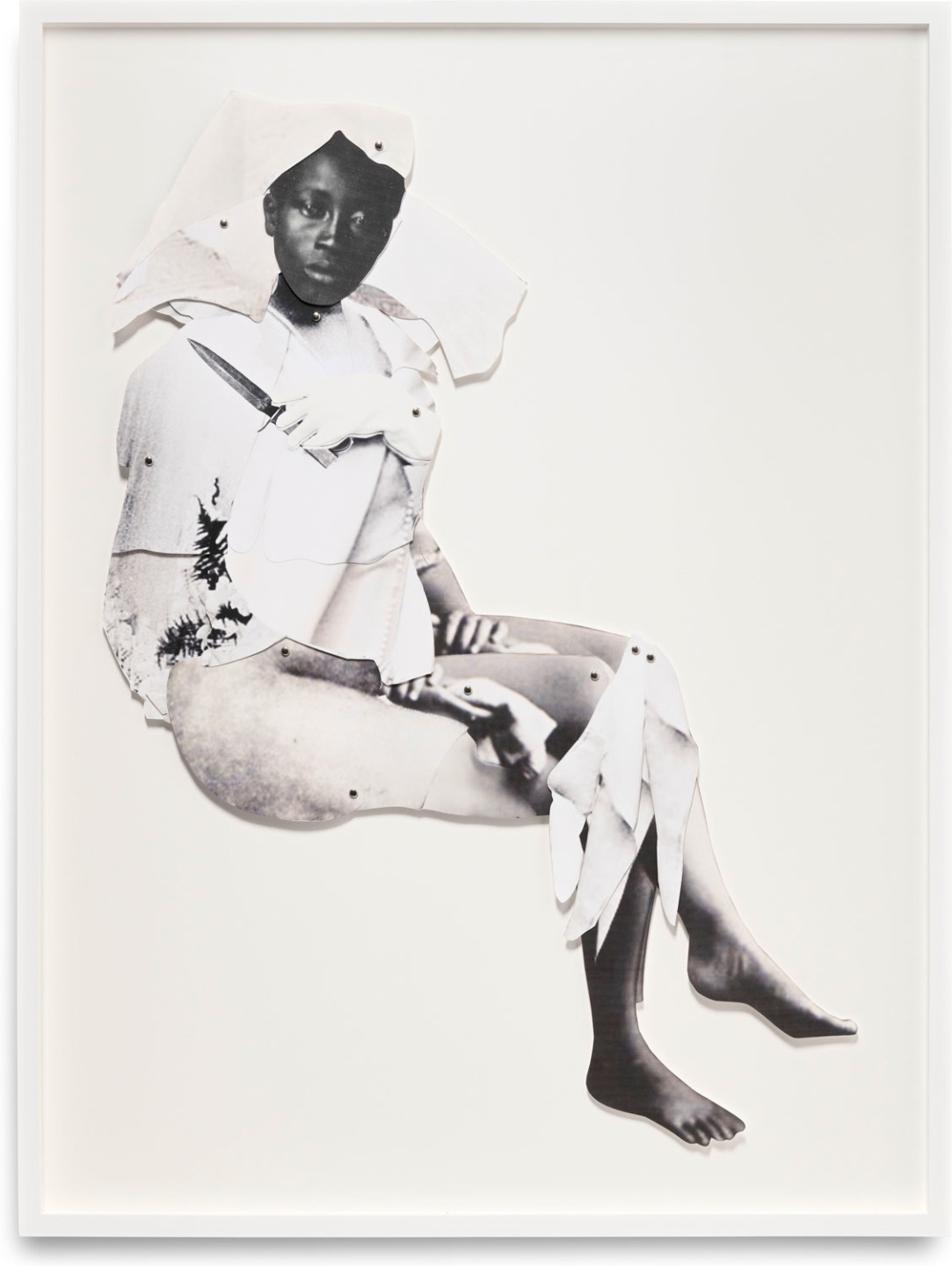
Serial, Concatenate, Sublime
The first thing I ever saw of Frida’s, a little over three years ago, was her Instagram feed, under the name Nemiepeba. It is still, as it was then, relentless, incandescent. Clearly the most advanced iteration of her practice. I posted this at the time:
”Mastery isn’t a term I throw around lightly. Particularly in a medium so newly founded that it’s only just beginning to settle into what might be considered parameters. Instagram is a platform that can support lots of different kinds of exchanges. Some mundane, some moderately interesting, some super personal, some baldly mercantile. Think of it as a floor. There’s a range of things that can happen on it. Folks can stand on it, they can cross it, some may sit or even lie on it. Folks can fight on it, shit on it, fuck on it, really it can support an inf inite range of activity. But dancing, on or across a floor, most will recognize as a very specific, infinitely variable and yet uniquely “elevated” sort of activity. It is perhaps the activity par excellence which transforms the most fundamental of human modalities, standing and/or walking, from its functional basis (and the very material, or physical, structure of being) to something more. We name a thing “dance” when the normal, the pedestrian, becomes expressive or supernormal. Nemiepeba is a dancer. Check the thread to see how she’s moving us, forward.”
Reading this back now, I’m struck mostly by my insistence that you check it out. Check it out. It’s not a library book but in its availability, in its complexly democratic, jazzy dyslexicality, in its unfurling, permutational mode of public address, its combination of intimate scale and infinite scope, it is as emancipatory as the random access to deep feeling and thinking made manifest in the humble “library book”. Not owned but freely accessed. I’m thinking Walt Whitman here but with the over-determined insularity of Emily Dickinson. But also, like Cecil (Taylor) a dumb tsunami of ontological assertion.
Available, Insistent, Relentless
Ostensibly a collection serially presented images, some “found”, some constructed, extracted, or emptied out. What one is confronted with is nothing less than a procession of deeply figured picture sequences (mostly still but often moving) that hover above a darkly articulated subject position without ever quite settling into anything simply declarative, or perhaps even enunciative.
In its unhurried, yet temporaneous delivery of “pictures” (material instantiation of images), one is left with (to my gut) an affective field, which is as black and unprecedented as anything ever produced under the regime of what clearly is some form of proto cinema. Some culturally dictated, altern path not yet taken. Perhaps an instantiation of Fred Moten’s “anacinema”.
In any event, what I’m left with after continually encountering Frida’s Instagram thread for the past several years is, this is nothing short of a mobile repository, a litany of residua, a voluptuous trail of black continuity, pyramid schemata as densely inscribed as any book of the dead, not so much an archive as an ark, a borne witness to the singularity that is blackness.
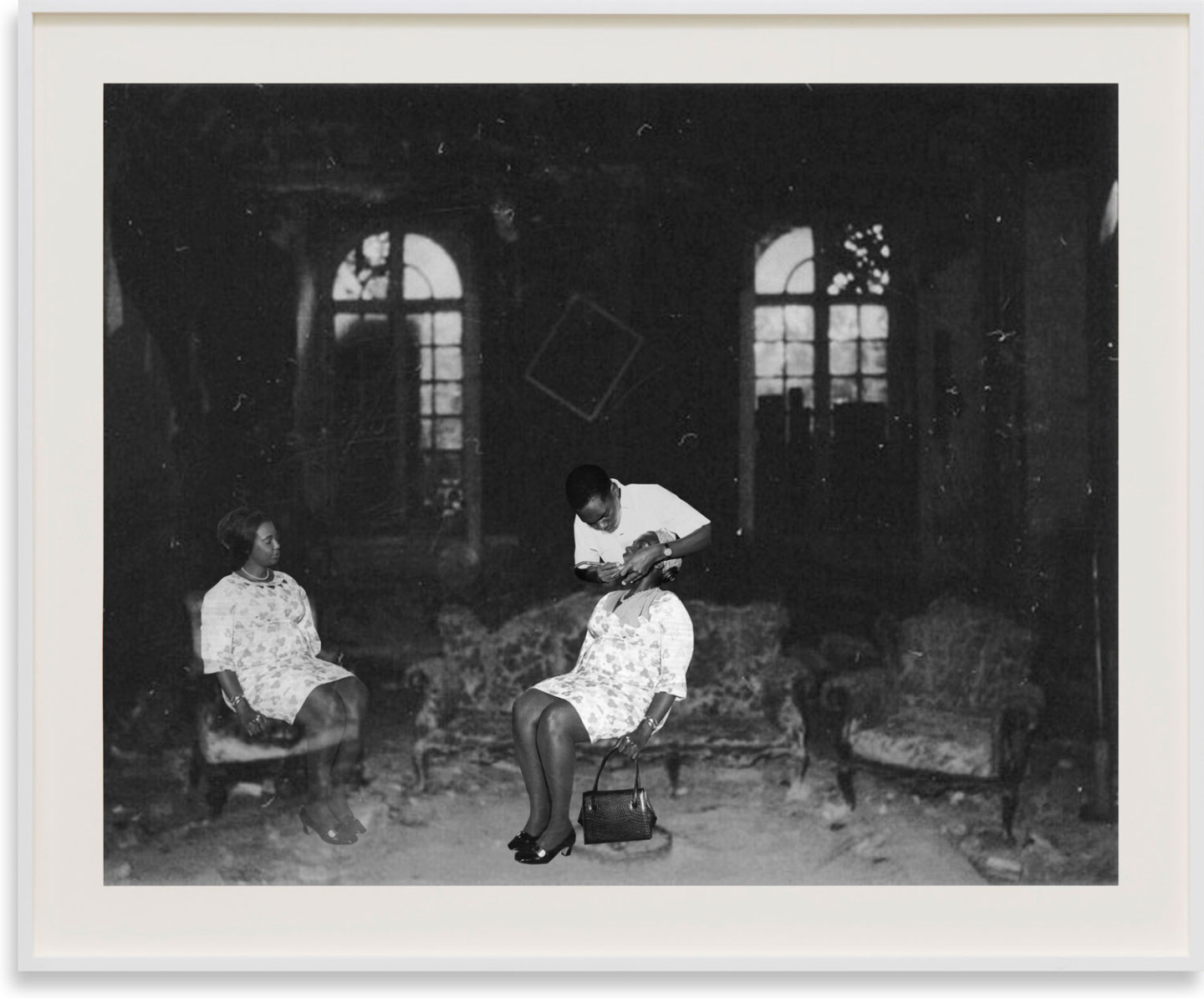
After linking with Gavin (Brown’s enterprise) this past year, I’m like, “you don’t want to be the producer who passed on signing Billy Holiday. You can sell her beautiful artefacts in the meantime. That thread though, we gotta figure out how to (without fucking it up) monetize that, that’s the most genius, incandescent shit out here”. A black thing wholly of the Internet, a rolling deep, limbic expressway to our newly mediated black sociality (how can one put down the newfound ability to put a thing down, once it’s been grasped?), the terms (and cost) of engagement have to be laid (like the railway, or, again, the Internet).
It’s some new shit, grounded in everything that’s come to us from the preceding century; cinema, television, epistolary exchange, algorithmic processors, jazz’s (and other ill suns like cubism, rock ’n roll, or more recently, hip hop and techno, all instantiations of black aesthetics), it’s a permutational, topological, syncretistic, re-indexicalisation of normative arrays, (hegemony/order). It’s the future (and for now free), and very black.
Trouble Consciousness
Missylanyus is a different beast. I stumbled onto his (yes, daemonic) work while trawling YouTube one late night early morning. I wasn’t looking for “art”. I was on a Funkadelic jag and was way down the rabbit hole searching for live performances of “Maggot Brain”. And behold, what’s this? I’m offered up Missylanyus’ “Maggot Brain” video. Really, you have to see it. And then you will know.
How fuckin strange, and yet familiar (the “alien familiar”) this thing was. It consists of a real time, continuous take performance of Missylanyus being, hearing, feeling, and deeply moved by, Funkadelic’s magisterial first recording of “Maggot Brain”. There’s nothing else quite like it (and by its very nature, its radical technical simplicity, it underlines how deeply troubling this absence is). It’s essentially black kabuki (or getoh). And I’ve found that when one has these sort of unorchestrated confrontations, really visitations, with new expressive propositions, you have to be super still. It’s a very, very fragile event horizon that requires one to, not so much ride the wave as, allow it to buffet you (gettin on the one) in its embrace. Until you’ve locked in, then, its total inner visions. Thangs masters were never intended to see.
Missylanyus is/was both a musician and a video maker.
Its high AQ (Alien Quotient) is why the work merits study and I’d say, in many instances, celebration. The power, rigour, and freestyling is both exemplary, and in some instances transformative.
In certain respects, one could describe a large percentage of the work as hip-hop music videos with unprecedented formal complexity but with all the mitigating polish (bling) stripped away (the ultimate in “savage/ruthless” articulation). What one is confronted with (or perhaps left with) are artefacts (videos) that function as raw surrogates for a very primal (and I’d suggest a very black, and emancipatory) impulse to self-actualize in the face of repressive (white supremacist) forces.
And this, coexistent in equal parts with raw, unapologetically sexist/misogynist performulations (thankfully minus much of the rampant consumerism and uncritical valorisation of a predatory and self-cannibalizing drug trade familiar to much of the most popular hip-hop). Given this, why would one propose that this work be attended to, because (as with blues and hip-hop in particular) there’s nothing else, formally speaking, quite like it (and this, not just despite, but in addition to the high quotient of abjection).
This is work of the lower depths, which is where most Black folks are more than a little familiar with. It’s work saturated with the stink of the barrel we crabs (not our natural habitat) occupy. One could compare the work in some respects to that of Kenneth Anger but ultimately the comparison fails. Missylanyus’ dark side is wholly unauthorized, or one should say self-authorized (unlike Anger’s, which functioned under the auspices of Aleister Crowley.)
Its self-determinacy, its maroonage, in both formal and thematic terms is what I find most interesting. Certainly, troubling work. But only insofar as it requires the de-linking of simplistically linear approaches to the work. In other words, yes it’s daemonic, but it’s also as free as a bird. The work challenges our capacity to see violently discontinuous works (and bodies of work) for what they are, constellation of ethically and philosophically, indeterminate phenomena. Phenomena that requires the viewer/observer to confront the work’s ethical assertions (or lack thereof) on a one to one basis (or as Dave Chappelle put it so powerfully in his recent Netflix special, “Bill Cosby did really sustain, incredible work on the behalf of Black folk, and he was a serial rapist”). In other word, deal with the complexity of the world.
Some of this comes down to our ability (perhaps a waning super power of ours) to process works/ phenomena saturated equally with both good and evil, horror and beauty, the abject and the sublime. Our ability to both see, and nurture beauty despite the presence of abjection. Given the over-determined nature of Black misery (and its primary affect, the abject), this is critical. For how can we assess ourselves productively if we can’t bear the presence of an abjection that’s bound to us (and our artefacts) as certainly as the colour of our skin? Missylanyus’ work lives in this place.

